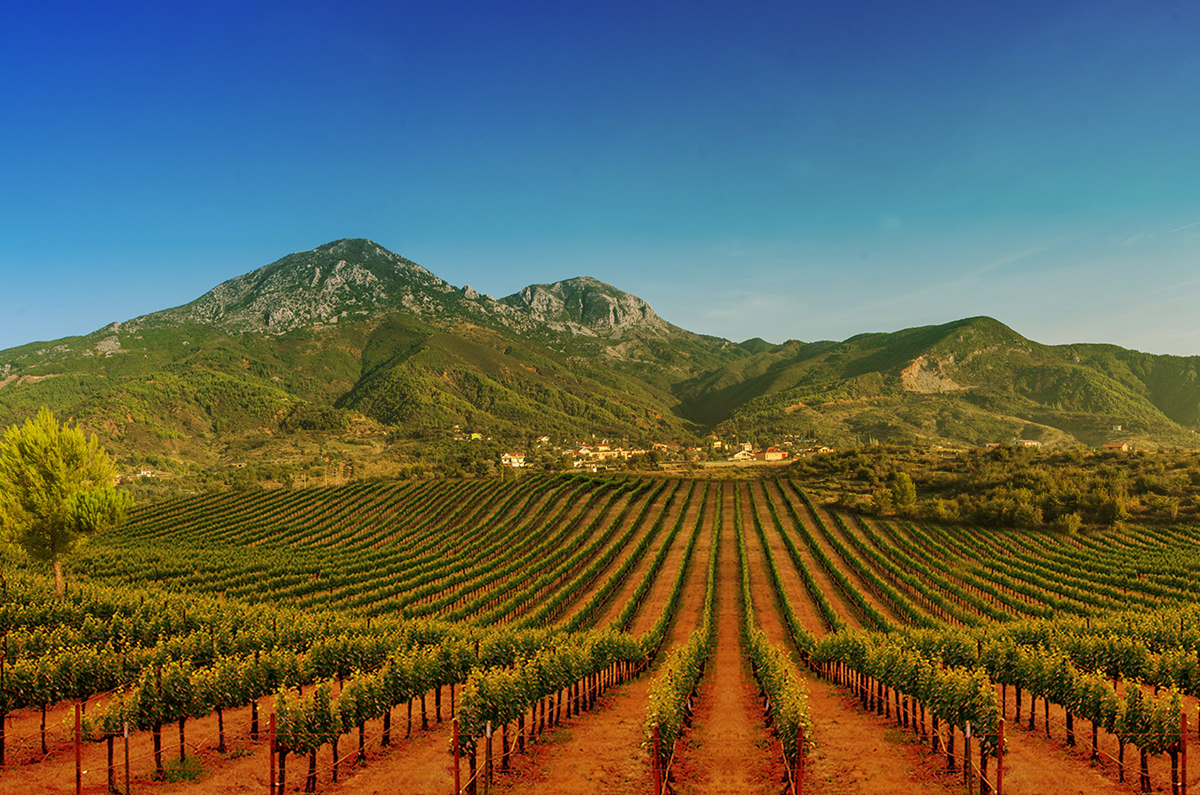
Locals start to prepare for the harvest season between mid-August and September. The grapes are harvested by hand, and the growers often use donkeys to get from their houses to the vineyards. The grapes ferment in stainless steel tanks for 15-20 days, and the wine is kept in these tanks for 8-12 months before bottling.
Kallmet vines produce large, relatively loose grape bunches. The leaves have five lobes. The grapes themselves are medium-sized, round, and reddish violet in color, with moderately thick skin. Kallmet wine has a beautiful rich ruby color and aromas of red apple, blueberries, and violets; its delicious flavors are quite persistent on the palate.
Albania has a long tradition of viticulture, which is mentioned in various ancient writings; the Roman naturalist Pliny described Albanian wine as “very sweet” and ranked it third among all the wines he had tasted. Many Albanian families traditionally grow grapes in their gardens to produce wine and raki, a local brandy (in the past, Kallmet grapes were used primarily for
raki). Grape cultivation is one of the main agricultural activities in Kallmet (the village after which the Kallmet grape is named) and Mirdita, Lezhë County, northwestern Albania, where 80% of local farmers consider Kallmet wine production to be one of their main sources of income. They have always planted their land with local grape varieties.
Kallmet wine is consumed during celebrations in Catholic families. Because it is strongly connected to religious celebrations, this wine is also a common accompaniment to daily meals. As a rather robust wine, Kallmet is a good pairing for the slow-cooked meat dishes typical of the region. In Shkodra, the County to the north of Lezhë, Kallmet wine is the traditional accompaniment to carp
casserole. Some families used to age cheese in Kallmet wine pomace.
Recently there has been a drastic reduction in the growth of vines as a result of the migration of young people to the cities and out of Albania. Climate change is another potential risk, as it affects the ripening process (weather patterns have become increasingly unpredictable).
Source: ‘Arka e Shijes’, Dhurata Thanasi (Luga e Argjendtë)





